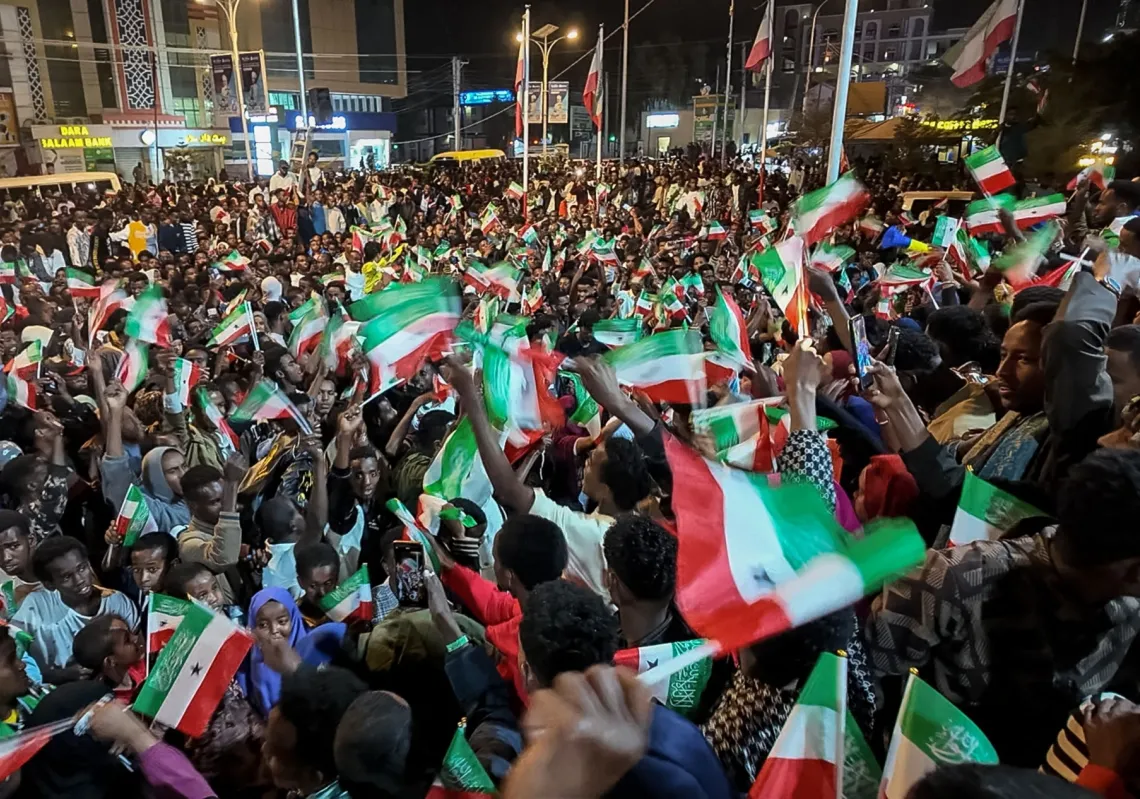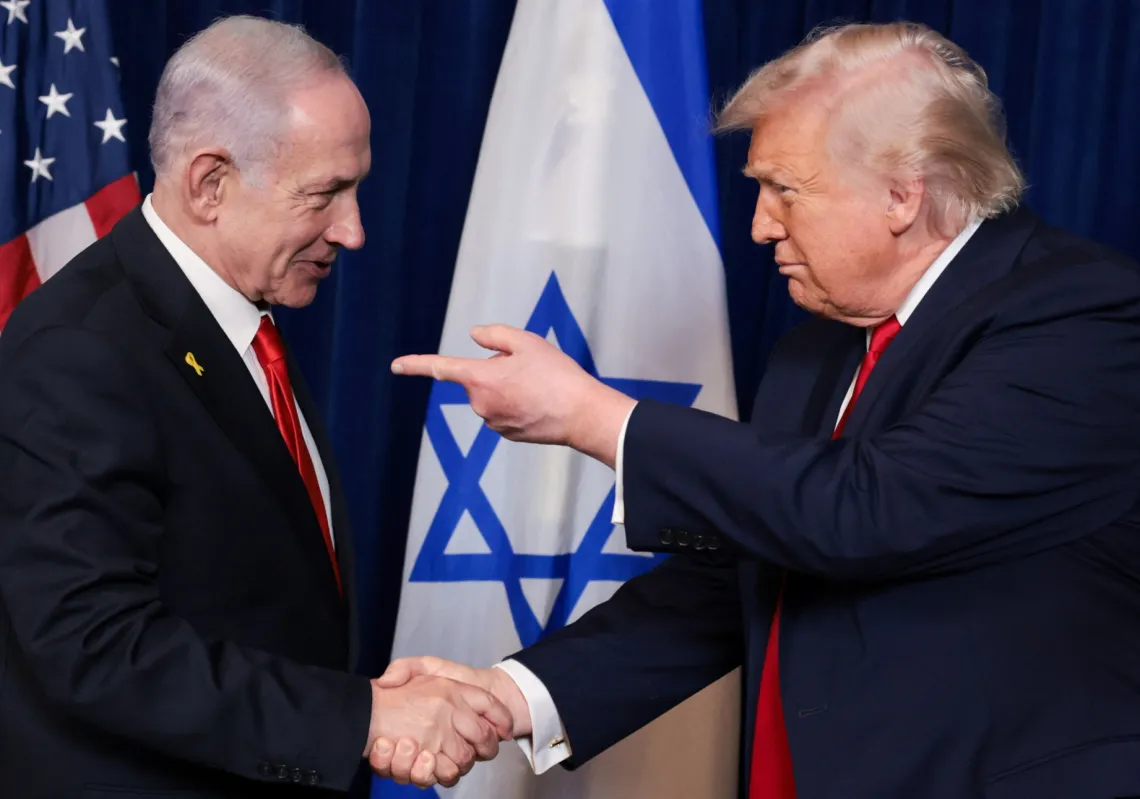For a century, conflict has flared over the region of Nagorno-Karabakh, a predominantly ethnic Armenian enclave nestled within the borders of Azerbaijan. In the 1990s, Armenians believed they had won a military victory over Azerbaijan when they took over the disputed region and many surrounding Azerbaijani areas. In late September, Azerbaijan set out to prove them wrong, launching a new military offensive that has taken many of those territories back and given thousands of displaced Azerbaijanis hope of returning to the lands they still consider home. Russian President Vladimir Putin has claimed that close to 5,000 people have already died—including dozens of civilians. And in reversing one injustice, Azerbaijan is bloodily creating a new one: the Armenians of Nagorno-Karabakh are under attack and may soon be encircled, facing potentially devastating humanitarian consequences.
The conflict in Nagorno-Karabakh remains one of the most tragic and persistent disputes in Europe. It is one of the last pieces of unfinished business from the end of World War I, still fought by the zero-sum rules of the last century: Armenia and Azerbaijan seek to pummel each other into capitulation. The devilish intractability of this conflict stems from two factors: a century-old security dilemma, in which each side has sought to achieve a sense of safety and control at the expense of the other, thereby undermining the security of both; and a democratic deficit, a total absence of societal trust and real dialogue, that makes compromise between the two sides almost impossible. The current toothless European security order cannot restrain them, nor have recent talks orchestrated by U.S. Secretary of State Mike Pompeo. The main prospects for curbing the fighting lie in the logistical limitations of the rugged terrain of Nagorno-Karabakh and the willingness and capacity of two great powers—Russia and now, after a century’s absence, Turkey—to facilitate a peace deal.
ENTER THE BOLSHEVIKS
The last outsiders to “resolve” the Karabakh conflict were the Russian Bolsheviks. Exactly 100 years ago, in 1920, the Bolsheviks’ 11th Army pushed invading Turkish forces out of the Caucasus, crushed the two newly independent republics of Armenia and Azerbaijan, and took over the disputed highland region.
Armenians mostly populated Karabakh and had for much of the region’s history, but Karabakh also had an Azerbaijani town, Shusha, and sat entirely within the territory of Azerbaijan. Neither the Armenians nor the Azerbaijanis could afford to live without Karabakh, a region of great significance for each nation. Left to their own devices, both sides would resort to ethnic cleansing to hold onto it. In 1920, the Armenians were especially loath to contemplate losing Karabakh after they had lost their entire western Armenian homeland to Ottoman Turkey in genocidal violence five years before.
Neither the Armenians nor the Azerbaijanis had much say in the settlement of the dispute. In July 1921, the Bolsheviks’ “Caucasus Bureau,” under the leadership of Joseph Stalin, decreed that a newly devised region called Nagorno (“mountainous”) -Karabakh would be formed inside Soviet Azerbaijan. The enclave would have relative autonomy and an overwhelmingly Armenian population.
Historians have debated Stalin’s decision endlessly over the years. Some claim that it was a deliberate effort to “divide and rule.” Others, including the historian Arsene Saparov, disagree, arguing that Soviet thinking was far more short-term and economically minded: the Bolsheviks imagined that Azerbaijan would not be viable if it contained an island of territory controlled by its neighbor, Armenia. Nagorno-Karabakh also had no good road connection to Armenia, so allocating it to Azerbaijan made good commercial sense. In any case, as pious Marxists, the Bolsheviks may have genuinely believed that within a generation both Armenians and Azerbaijanis would shed their national identities and become good socialists.
Under Soviet rule, the arrangement mostly worked, and the two communities generally lived peacefully side by side, if more in parallel than together, for six and a half decades. Sergei Shugarian, a former Armenian Communist Party official, told me that Armenian and Azerbaijani elites got along fine, as did the workers: “Down below they lived in friendship, there were no problems at all.” But tensions persisted in the middle, especially among intellectuals, who kept the flames of nationalism alight, still nurturing national aspirations that could be fulfilled only at the expense of the other.
Throughout the Soviet era, Armenian leaders in Nagorno-Karabakh complained to Moscow that Azerbaijan suppressed their community’s educational and cultural rights. During the early glasnost period, in 1988, they called for the region to join Soviet Armenia. Karabakh’s allocation to Azerbaijan in 1921 was a Stalinist injustice, the Armenians insisted. They won the backing of many leading Russian liberals—including, for a time, the Nobel laureate Andrei Sakharov.
The 1921 decision did indeed lack legitimacy, as did all the Bolshevik fiats of that period. But for Moscow to reallocate Nagorno-Karabakh to Armenia in 1988 would hardly constitute the triumph of justice. Such a move would merely have created a new kind of illegitimacy that penalized Azerbaijan and the Azerbaijanis who lived in and around the enclave. The most obvious solution would have been to grant the Armenians of Nagorno-Karabakh real and meaningful autonomy within an integral Azerbaijan. But the authoritarian political culture of the Soviet Union militated against such a conclusion. Soviet Armenian and Azerbaijani officials did not talk to one other so much as they appealed to the Kremlin and demanded that Soviet leader Mikhail Gorbachev rule in their favor.
Gorbachev eventually decided to leave Nagorno-Karabakh within Azerbaijan but to entrust its administration to a special committee from Moscow. The ruling pleased neither side. By then, violence had already broken out between the Armenians and the Azerbaijanis, beginning with horrific pogroms against Armenians in the Azerbaijani town of Sumgait.
As the Soviet Union disintegrated at the end of 1991, the two sides staked out diametrically opposite positions. The Armenians declared Nagorno-Karabakh an independent state, while the Azerbaijani parliament in Baku formally abolished the territory’s autonomy altogether. But Azerbaijan held a legal trump card: as internal Soviet borders became international borders, Nagorno-Karabakh was now considered part of Azerbaijan—whatever the opinion of the majority of its residents.
THE MIRAGE OF TOTAL VICTORY
The stage was set for a violent reckoning. In 1991, the two nations slid into a war that in many ways felt like 1920 all over again. With only a weak and equivocating Russia attempting to restrain both sides—while also providing military assistance to both—the conflict became a quest for total victory. In 1994, after much bloodshed, the Armenians eventually prevailed, taking control not just of Nagorno-Karabakh itself but also of seven surrounding Azerbaijani territories, displacing half a million Azerbaijani civilians in the process.
The fighting stopped in 1994, but the rhetorical and political war continued. Maximalist positions on each side—now defended in fierce social media battles—have taken over the discourse: each side essentially envisions Nagorno-Karabakh as a monoethnic region without the other community.
Over the years, many Armenians hubristically began to refer to the Azerbaijani regions adjacent to Nagorno-Karabakh that they had captured between 1992 and 1994 as “liberated territories.” Empty towns and villages were given Armenian names and repopulated by thousands of settlers. In 2017, the de facto authorities in Nagorno-Karabakh renamed the enclave the “Republic of Artsakh,” using a medieval Armenian name that seemed to further deny the former Azerbaijani minority population any claim to belonging in the region.
In return, Azerbaijani officials continued to use Azeri names—such as Khankendi for Nagorno-Karabakh’s capital, Stepanakert—for towns that had a majority Armenian population of up to 90 percent in Soviet times and to promise their coming “liberation.” The message was that Baku wanted these Karabakhi towns back, but not the Armenians who lived in them. (Azerbaijani forces recently seized the Armenian-populated town of Hadrut along with a handful of other villages in Nagorno-Karabakh, and all their inhabitants have fled.) Although Azerbaijani officials still talk—mainly to foreign audiences—about offering “high autonomy” to Nagorno-Karabakh, Baku has never in 30 years drafted any proposal clarifying what this status would look like in practice.
The two sides became so entrenched in their positions that a finely spun diplomatic solution found no takers. Back in 2006, French, Russian, and U.S. mediators drafted a plan to thread the needle of the conflict, finesse the sovereignty dispute, and restore the rights of as many Armenians and Azerbaijanis as possible. But their Basic Principles document has never gotten serious traction among the region’s elites or its broader societies.
In his study of the clash of the Russian and Ottoman Empires in the First World War, the historian Michael Reynolds concluded, “The quest for absolute security is the road to ruin. Security can be no more absolute than the future can be knowable. . . . The potential threat by its nature is omnipresent and impossible to vanquish. To chase it means to provoke reactions, setting off chains of events beyond one’s control.”
The conflict over Nagorno-Karabakh in both its old and new iterations offers a lesson in the impossibility of an ultimate victory. A victim quickly becomes a perpetrator and vice versa. In the current fighting, the pendulum has now swung strongly in favor of Azerbaijan on the battlefield. The Azerbaijani public has rallied behind its leaders as its armed forces score military successes and recover lost territory. Heavy casualties have so far not blunted enthusiasm for the offensive.
Yet the Azerbaijanis should heed their own experience of 1994, when the Armenians believed they had achieved “absolute security.” If they face the prospect of losing their much-loved territory of Karabakh, the Armenians may resort to desperate measures and continue the war by other means, perhaps even attacking Azerbaijani targets outside the region.
RESOLUTION FROM THE OUTSIDE
The conflict comes at an especially bad international moment—which may be why Azerbaijan chose this time to act. The United States has been largely disengaged for years, despite its formal leading role in the mediation process sponsored by the Organization for Security and Co-operation in Europe (OSCE). Russia’s strategy of equivocation and balancing has been exposed: if Moscow openly supports its military ally, Armenia, it will instantly lose its other valued partner, Azerbaijan.
Turkey, a player that had not intervened in the region in exactly 100 years, has again weighed in: Ankara may have initiated the new conflict by giving direct military assistance to Azerbaijan—and in so doing, raising old, existential fears among the Armenians. Turkish President Recep Tayyip Erdogan’s aid to Baku may be guided more by domestic politics and solidarity with a Turkic nation than a genuine strategic interest in the Caucasus, but his supply of lethal military drones to Azerbaijan has thus far been the decisive factor in the war.
If the Azerbaijani advance is slowed by winter or highland geography, the conflict could turn into a slow war of attrition around Nagorno-Karabakh itself, where Armenian forces are still dug in. If Azerbaijani forces succeed in encircling Nagorno-Karabakh, cutting its supply lines to Armenia, a humanitarian catastrophe could ensue.
If there is deadlock, the traditional great powers could also try to sort it out, with Russia and Turkey resuming the roles they played in the Caucasus in the nineteenth century, when the Russian tsar and the Ottoman sultan fought a series of wars around the Black Sea. Erdogan and Putin, spoke by phone on October 14, leading observers to wonder whether the leaders might be bargaining over such an agreement, which would be shaped more by their own agendas than by those of the Armenians and the Azerbaijanis.
Multilateral diplomacy drawing in actors outside the immediate vicinity has not borne much fruit for Nagorno-Karabakh. At the zenith of European multilateralism, in 1992, the OSCE founded the Minsk Group—consisting of Belarus, France, Russia, Turkey, the United States, and several western European nations, along with Armenia and Azerbaijan—to resolve the conflict. But the process achieved little and did not even begin to tackle the democratic deficit at the heart of the conflict by engaging civil society, talking to marginalized communities, or tackling the toxic hate speech that fuels the conflict. Russia eventually assumed the leading role in determining the region’s fate, much as it did the century before.
A deal brokered by Russia and Turkey would most likely disadvantage the Armenians by magnifying Turkish influence in the region, but Azerbaijan could lose out as well. A pact of this kind might allow Russian peacekeepers into the area, something Azerbaijan has consistently opposed. It would also increase the leverage of Erdogan’s Turkey, which is increasingly driven by a Sunni Muslim religious agenda, in predominately secular and Shiite Azerbaijan.
The only countries that can prevent a war without end or a latter-day Russian-Turkish great-power deal—while reaching a fair settlement—are Armenia and Azerbaijan themselves. But doing that would require them to conclude that resolving their conflict is more in their common interest than persisting with military force or allowing others to resolve it for them. The current bitterness and bloodshed sadly suggest that such a decision is not close at hand. Even if this round of fighting ends in Azerbaijan’s favor, Armenians will not give up. The dispute over Nagorno-Karabakh will likely remain unresolved for another generation to come.
Sign up for our Weekly Newsletter
Get the best of Majalla, straight to your inbox.









